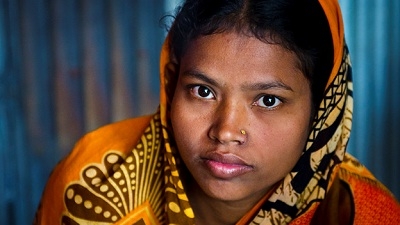Challenge
Bangladesh, with about 150 million inhabitants on a landmass of 147,570 square kilometers, is among the most densely-populated countries in the world. While poverty in both urban and rural areas declined by an impressive 19 percentage points in the last decade-and-a-half, the absolute number of people below the poverty line remains significant. With around 64 million people still below the international poverty line of $1.25 a day (2010), Bangladesh faces considerable development challenges. Bangladesh’s geographical position makes it one of the most vulnerable countries to climate change and natural calamities like cyclones and floods. Sixty percent of the worldwide deaths caused by cyclones in the last 20 years occurred in Bangladesh. Sustained growth in recent years has rapidly increased the demand for energy, transport and telecommunications services. However, insufficient planning and investment have now resulted in severe infrastructure deficits.
Solution
The International Development Association (IDA) has supported Bangladesh since 1972, one year after the country’s independence. Since then, IDA has provided around $16 billion in support for policy reforms and investment projects, accounting for more than one-quarter of all foreign aid to Bangladesh. More than $12.5 billion has been disbursed to support health and education, rural infrastructure, and policy dialogues that have created conditions for broad-based economic growth. IDA’s support to Bangladesh is also comprised of a substantial body of analytical work and knowledge products that have underpinned IDA operations, influencing the policy debate and ultimately, development outcomes.
The IDA assistance spans across different sectors. Through long-standing support to education, health and family planning, successive governments have made the most of well-established connections between education for girls and lowered population growth: female participation in schools has delayed the age of marriage and birth of the first child and decreased overall fertility rates. A recent Millennium Development Goal (MDG) assessment for Bangladesh notes that support for rural infrastructure (specifically roads and electricity) also seems positively correlated with health and education results. Roads improve access to schools and health clinics, reduce transport costs, but also help increase rural non-farm incomes that help pay for such services.
Results
In the past two decades, Bangladesh has experienced significant poverty reduction and profound social transformation with the widespread entry of girls into the education system and women into the labor force. Women consist of 80% of workforce of Bangladesh’s garment industry. The country is on track to meet Millennium Development Goals for infant and child mortality and has already met the Millennium Development Goal for attaining gender parity in education. Overall, Bangladesh has made laudable progress on many aspects of human development, which has been a foundation for improvements in growth, empowerment and social mobility.
- Education: The World Bank is helping to rehabilitate primary schools and train teachers. With IDA support, Bangladesh has made remarkable progress in girls’ education, with 98% of girls enrolled in primary school today. Enrollment of girls in secondary schools has also risen to over 6 million from 1.1 million in 1991.
- Health: IDA has been working with the government since the mid-1970s to reduce malnutrition and improve health outcomes. Assisted deliveries have helped reduce maternal mortality rates by 40% in the past decade. Today, nearly 90% of Bangladeshi children receive Vitamin A supplements and over 80% are vaccinated, contributing to an impressive reduction in infant and child mortality by more than two-thirds since 1990.
- Rural Infrastructure: IDA has contributed to the improvement of rural connectivity in 21 districts. The assistance helped to improve and maintain more than 2,500 km of rural roads. An impact study by the Bangladesh Institute of Development Studies shows that female employment increased by 50%, the share of farmers’ nonagricultural assets increased from 25-50%, and the poverty reduction rate almost doubled in the project areas.
- Energy: IDA has supported public-private partnerships in small power plants as well as the construction of two large-scale independent power plants that account for 20% of Bangladesh’s installed capacity and up to 30% of power generated in the country. Moreover, 650,000 rural homes are connected to the national grid while more than 1.2 million households in remote rural areas have installed solar home systems.


